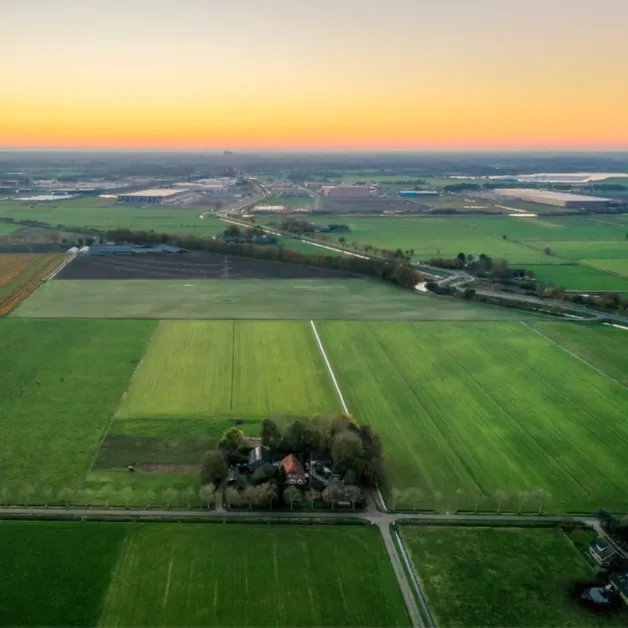Sinds december 2021 speelt LEIS (Lokale Energie Initiatieven Stimulering) een centrale rol in het ondersteunen van het gebiedsproces in Dalfserveld-West. Dit gebied in de gemeente Dalfsen is door de provincie en gemeente aangewezen als zoekgebied voor het opwekken van duurzame energie, een belangrijke stap in de regionale energietransitie. Leis onderzoekt de haalbaarheid van opwek en opslag van biogas, windenergie, zonne-energie en waterstof. Ook worden de bewoners geadviseerd om 100% lokaal eigendom in te vullen en hoe dit georganiseerd kan worden. Elk van deze onderdelen speelt een cruciale rol in de transitie naar een duurzame en toekomstbestendige energievoorziening voor het gebied. We bevinden ons nu in de afrondende fase van dit onderzoek, waarbij alle facetten uitgebreid zijn getoetst.
Achtergrond en doelstellingen van het haalbaarheidsonderzoek
Het onderzoek in Dalfserveld-West is opgezet om een duidelijk beeld te krijgen van de mogelijkheden en beperkingen van verschillende energieoplossingen binnen de regio. De specifieke doelstellingen zijn:
- Het bepalen van de technische en economische haalbaarheid van biogas, windenergie, zonne-energie en waterstof.
- Het in kaart brengen van de milieueffecten en de ruimtelijke impact van elke oplossing.
- Het opstellen van een uitgebreide rapportage waarin de resultaten van elk deelproject worden samengebracht.
Deelprojecten: Energieopties voor Dalfserveld-West
Het haalbaarheidsonderzoek bestaat uit vier belangrijke deelprojecten die stuk voor stuk gericht zijn op verschillende vormen van duurzame energieopwekking.
Biogas
Het deelproject rond biogas richt zich op het onderzoeken van de mogelijkheden om organisch afval, zoals mest en reststromen uit de landbouw, te vergisten en om te zetten in biogas. Dit biogas kan vervolgens worden gebruikt als brandstof voor elektriciteitsproductie of warmtevoorziening, of verder worden opgewerkt tot groen gas voor transport of huishoudens. De haalbaarheidstoets bekijkt niet alleen de technische haalbaarheid, maar ook de economische waarde voor de lokale agrarische sector en het potentieel voor CO₂-reductie.
Windenergie
Voor de opwek van windenergie is Dalfserveld-West onderzocht op de beschikbare ruimte voor windturbines door middel van een belemmeringenonderzoek. In het onderzoek is een potentieel gebied voor de opstelling van een windmolen in kaart gebracht maar ook aspecten zoals de economische haalbaarheid en maatschappelijke impact
Zonne-energie
In dit deelproject wordt onderzocht hoeveel ruimte er in Dalfserveld-West beschikbaar is voor een klein zonnepark binnen de kaders van de provincie en welke mogelijkheden er zijn om daken van agrarische en industriële panden te benutten voor zonnepanelen. De haalbaarheidstoets heeft ook gekeken naar de mogelijke opbrengsten, financiële haalbaarheid, en de balans tussen landbouwgrond en energieopwekking. Hierbij speelt draagvlak onder omwonenden en grondeigenaren een belangrijke rol.
Waterstof
Tot slot onderzoekt LEIS de mogelijkheid om waterstof te produceren en op te slaan als energieoplossing in Dalfserveld-West. Waterstof kan worden geproduceerd door middel van elektrolyse, waarbij elektriciteit uit wind- of zonne-energie wordt gebruikt om water om te zetten in waterstof en zuurstof. De waterstof kan vervolgens worden opgeslagen en ingezet als brandstof of als buffer om schommelingen in de energievraag op te vangen. Het onderzoek richt zich op de haalbaarheid en de toekomstige potentiële rol van waterstof in de lokale energiemix.
Rapportage
Nu het onderzoek in de afrondende fase is, worden de resultaten van elk deelproject gebundeld in een uitgebreide rapportage. Deze rapportage biedt een overzicht van de bevindingen en geeft concrete aanbevelingen voor de toekomst van duurzame energieopwekking in Dalfserveld-West. Hierbij worden de voordelen en eventuele beperkingen van elk type energieoplossing helder uiteengezet. De rapportage zal worden aangeboden aan de gemeente Dalfsen en dient als onderbouwing voor verdere beslissingen over de ontwikkeling van duurzame energie in het gebied.

